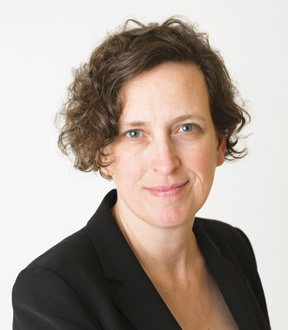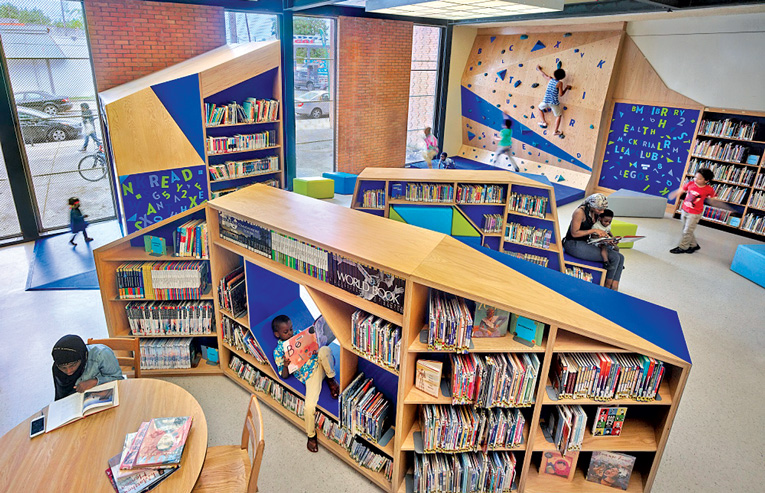Climbing the Walls | Editorial
The Free Library of Philadelphia elevates early learning through play with the introduction of inventive children's spaces that encourage all kinds of movement.
 Going to the children’s room just got a lot more fun at the Free Library of Philadelphia. There, the link between play and learning is being explored through inventive space design that encourages new levels of physical engagement. Three neighborhood branches—Cecil B. Moore Library, Whitman Library, and Wyoming Library—are rolling out new Play-and-Learn Spaces that radically expand the tangible experience offered through manipulatives and other elements focused on hands-on learning. They no doubt hold lessons for all of us.
Going to the children’s room just got a lot more fun at the Free Library of Philadelphia. There, the link between play and learning is being explored through inventive space design that encourages new levels of physical engagement. Three neighborhood branches—Cecil B. Moore Library, Whitman Library, and Wyoming Library—are rolling out new Play-and-Learn Spaces that radically expand the tangible experience offered through manipulatives and other elements focused on hands-on learning. They no doubt hold lessons for all of us.
“We used to ask families and children to sit quietly and read together—that is what people did at the library. We now know that children learn best through play, an understanding that has guided us to reenvision how our children’s spaces could maximize children’s learning,” Siobhan A. Reardon, president and director of the Free Library, said in a statement. “At our core, we are a learning space, and we are thrilled to introduce these dynamic new children’s areas that are wholly unlike other spaces neighborhood children encounter, and that will facilitate high quality language experiences between children and their caregivers.”

A bird’s-eye view of Cecil B. Moore Library’s Play-and-Learn Space
Among the features is an indoor climbing wall. The colorful, 12'-high wall at Cecil B. Moore Library (pictured) opened last December and has been a hit ever since. The design approach in each setting is unique, but each Play-and-Learn Space offers places to perch or nest, clamber about, and explore. The spaces, funded by the William Penn Foundation with support from the Knight Foundation, were designed by the architecture firm Digsau and Studio Ludo, a play-focused nonprofit. Several outdoor spaces are on the way, at the Cecil B. Moore Library and at a fourth site, the Kingsessing Library.
Kids aren’t the only ones learning. According to the library, the “literacy-rich playscapes” are also “learning laboratories for the Free Library system, to determine best practices for incorporating play into early-literacy skill building.” The Play-and-Learn Spaces will be evaluated based on a framework developed by a team led by Kathy Hirsh-Pasek, a fellow at the Brookings Institution, director of Temple University’s Infant Language Laboratory, and coauthor of books such as Einstein Never Used Flashcards: How Children Really Learn—and Why They Need To Play More and Memorize Less and Becoming Brilliant: What Science Tells Us About Raising Successful Children.
I have no doubt that the team at the Free Library will maximize the opportunity to understand the impact of these spaces on the kids in their city—Reardon was named Library Journal’s 2015 Librarian of the Year for her leadership in the reinvention of the library, including its approach to fostering literacy.
As a play advocate, I’m excited to see how these projects will inform the ever-evolving children’s room, support the kids who are lucky enough to have them, and inspire more play for the rest of us.

RELATED
The job outlook in 2030: Librarians will be in demand
The job outlook in 2030: Librarians will be in demand
ALREADY A SUBSCRIBER? LOG IN
We are currently offering this content for free. Sign up now to activate your personal profile, where you can save articles for future viewing






Add Comment :-
Be the first reader to comment.
Comment Policy:
Comment should not be empty !!!